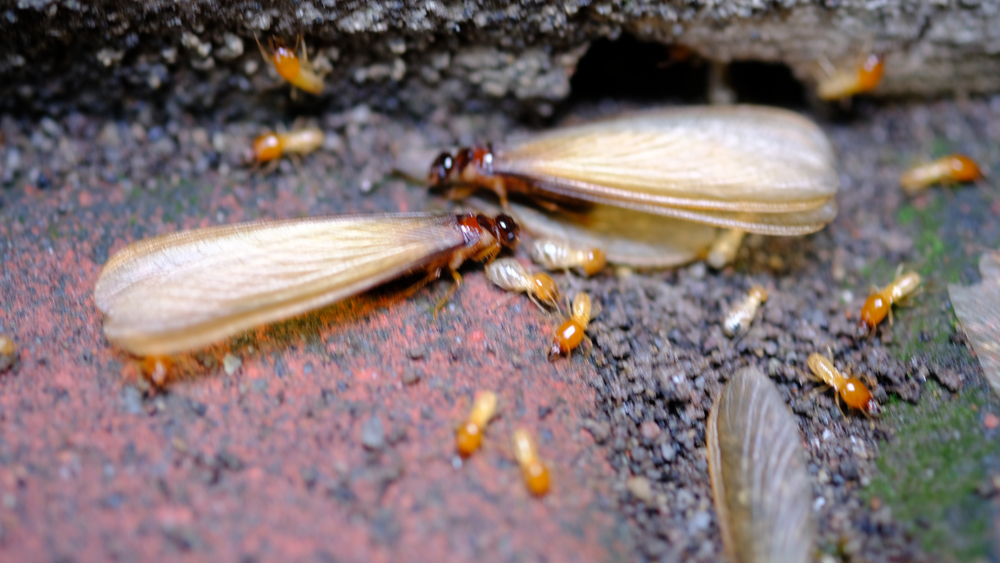
Termites are among the stealthiest of pests that can invade your home or business. They lurk deep inside the wooden structures, eating away, and are adept at hiding any traces of their presence. That’s why it’s so hard to know if you have termites.
By the time the insects are detected, they may have eaten a hole not only in your house but also in your pocketbook. The Florida Department of Agriculture and Consumer Services estimates that the average damage to homeowners of an infestation by Formosan termites is $10,000, and in some cases, it’s many times that amount. In fact, termites can inflict so much harm that the structure has to be demolished and rebuilt.
That’s why early detection is so important to prevent a small breach of your home’s termite defenses from becoming a huge, costly headache. But unfortunately, many of the signs of termites in your home are so subtle that only trained pest-control technicians such as those at Nozzle Nolen can detect them.
If you are curious how to know if you have termites in your home or business, Nozzle Nolen has put together this helpful guide.
How to Know if You Have Termites: Step-by-Step
The first step in knowing whether you have termites is recognizing one when you see it. Termites prefer to stay out of sight, but even when they appear, such as during their swarming season in spring and early summer or after rain has flooded their underground nest—they’re often mistaken for ants or other insects.
The termite species encountered most often in South Florida are Subterranean termites and Drywood termites:
- Subterranean termite workers are typically white or off-white in color and about one-eighth inch long, while soldiers are a bit larger and have some beige, brown, or orange coloring. Reproductive swarmers are about one-half inch long and have long oval wings.
- By contrast, Drywood termite workers look much the same as their soldier and reproductive counterparts. Unlike Subterranean termites, which build their nests underground, Drywood termites nest in the same wooden structures they feed on.

Since termites are so shy, early warning signs of their presence in or around your home may be the residue of their activities. The next step in how to know if you have termites is to watch for these telltale signs:
- Look for swarmers, or reproductives, in the spring and early summer when they leave the colony to scout out locations for new lodgings. Swarmers are attracted to moisture, decaying or wet wood, mulch, and the soil around wooden structures.
- Subterranean termites build mud tubes that connect their ground nests with homes and other buildings.
- Check inside broken pieces of wood for signs of tunneling by the termites. The tunnels may look like swirls of tiny pathways or grooves in the wood.
- Scan surfaces for the presence of small piles of what looks like sawdust or powder that’s actually termite excrement or frass. The insects push this material out of tiny holes in the wood and also use it to camouflage the holes they dig.
- Tap wood with a screwdriver or other instrument and listen for a hollow sound that may indicate areas where termites have been active. You may also hear the clicking sounds termites make as they communicate.
- Examine any moist wood outside your home or business for signs of damage, including tree stumps, woodpiles, and wooden portions of the structure that regularly come into contact with moisture or moist soil.
- Watch for any indications of walls, floors, or ceilings starting to droop, slope, or bulge. Termite damage can also cause windows and doors to stick or otherwise malfunction due to their supporting beams becoming warped.
The Many Benefits of a Professional Termite Inspection
Termites are so adept and hiding their destructive activities that by the time the damage becomes obvious, you’re looking at some significant repair work. The best form of insurance against a potential five-figure repair bill for termite remediation is to contact a professional pest control service with decades of experience serving home and business owners in South Florida.
Nozzle Nolen’s trained and certified pest control technicians can spot the slightest indications of termites in and around your premises so the pests can be eliminated before they can do much damage. We devise a treatment plan customized to your needs, which may include conventional foundation treatments, tent fumigation, non-tent treatments, tape-and-seal fumigation, and heat treatments.
With Nozzle Nolen’s “White Glove” service, you’re assured that all the preparation and post-treatment work is taken care of for you, completely and professionally. Keeping termites and other pests away for good is as easy as signing up for the company’s 365 Complete Home Protection Plan, which also covers ants, cockroaches, bed bugs, bees, wasps, and other insects as well as rodents and spiders.
Getting Started With Nozzle Nolen
If you’ve got even an inkling of concern about the possibility of termites in or near your home, you can put those concerns to rest by signing up for a free evaluation. Rather than relying on your own best guess about whether you’ve got a termite problem, let the pros at Nozzle Nolen give you a definitive answer.
Nozzle Nolen has been serving residents and business owners in South Florida for more than seven decades. We love educating just as much as keeping homes and businesses pest-free. So if you believe you might be facing an infestation or would like more information on how to know if you have termites, give us a call at 800.226.6536 or Contact Us. We look forward to serving you.




